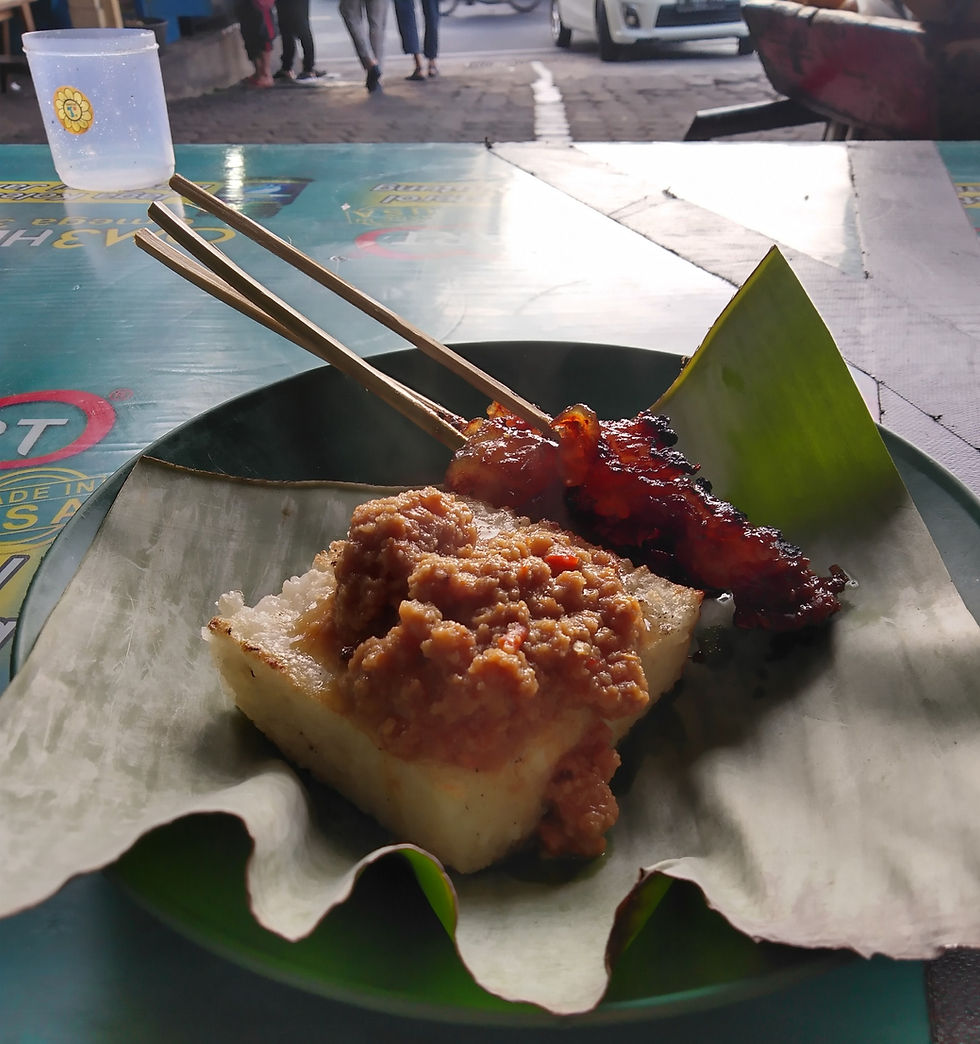Sate by the Rails: Plered Station hidden gem
- Mohammad Ghifari
- Feb 11, 2021
- 3 min read
Another reason to be grateful for living in Nusantara (or the Malay world) is that we have different kinds of Sate in; almost; every state/province. In some cases, you have two or more sub-varieties in each. If you haven't checked out our sate post yet, you might want to do so beforehand.

Sate Maranggi is one kind of sate originating in West Java. There are a few origin stories for this glazing heaven-sent skewer. One of the most popular stories was that it had been the result of the assimilation of two cultures: Local and Chinese. Sate had been in our culture for quite a while, but then these Chinese style pork jerky came along and assimilate into one dish we know today as Sate Maranggi. Assimilated with a similar mode of marinating, but a different kind of meat; mostly beef or mutton due to high number in the Muslim population.
You see the way this sate being marinated is very similar to jerky or candied meat. All you need is sugar, in this case, palm sugar, and a little bit of salt to taste. Palm sugar is also another heaven-sent commodity that we overlooked many times. We forgot how much we are dependent on it. Like, for real. It has an unmistakably complex taste; smoky, sweet, burnt, dark. Our kecap manis which by the way is the go-to marinate has more palm sugar to it than the fermented black soy in terms of flavor (Nurhayati, 1996).
In this story, we're about to tell you a lesser-known place. Bear with us till the end.
When people heard of Sate Maranggi, they would instantly refer to the region Purwakarta as the hotspot. That is true. More specifically, to Hj. Yetty's legendary teak plantation restaurant.
But the way GRAMUS work here is that we look for hidden gems that sometimes only the locals know about the spot. They're pretty much some of the most underrated spots, and see if we can get in touch with these Local Heroes. We would like to honor these heritage for the sake of preservation of our culture.
So we did and turns out it was another 50 minutes drive from Hj. Yetty's to the south exactly at Plered train station we found what we call this hidden gem or the lesser-known place. Once you get there, you'll see a bunch of similar-looking stalls. All exerting smoke, selling Sate Maranggi.
We sat at the one somewhere in the middle and ordered some two-digits sum of sate. They provided hot tea and rice in banana leaf packaging ready on the table; talking about go-green here. It smells amazing; meaty, savory, sweet, nutty; and probably no one would argue that nothing beats real charcoal barbecue. This one used coconut charcoal with a slightly woody note to it and a hint of sweetness; inside this cloud of apparent smoky aroma; just gorgeous.
The maestro; as we call him; explained that he used palm sugar for marinating, with a bit of MSG (of course). All the stalls there he said, used pretty much the same recipe. It only differs in their ratio, based on sellers' personal taste.
We opened up our banana leaf rice, put a couple of sate(s) on, drizzle their signature gravy. The result:

One piece of information that we think needs to be conveyed is that almost every sate anywhere will use a unique locally produced kecap manis for their gravy. In the case of Purwakarta, their secret ingredient is a local product called Kecap Angsa Hitam. That one was something else, swear to God. It has a degree of savory we never encountered in any other kecap. Different flavor profiles by mere taste, somehow not as dark as the others.
We would go back in the future definitely when the craving kicks again. For sure we are going to be looking for other local heroes, especially the lesser-known ones; anywhere.
There you have it, another story behind the bite brought to you by GRAMUS.
Source:
Agmasari, S. (2016). Jangan Kaget, Inilah Sebenarnya Asal Usul Sate Maranggi. Kompas.com. Retrieved from https://travel.kompas.com/read/2016/05/20/200200727/Jangan.Kaget.Inilah.Sebenarnya.Asal.Usul.Sate.Maranggi.
Nurhayati. (1996). Mempelajari Kontribusi Flavor Gula Merah pada pembentukan Flavor Kecap Manis. IPB University Repository. Retrieved from http://repository.ipb.ac.id/handle/123456789/30688





Comments